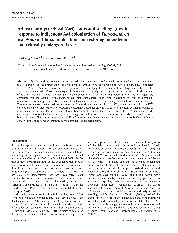摘要
It is increasingly evident that the mycorrhizal colonisation of endangered species is of major importance for their restoration. In the present study, the symbiosis of arbuscular mycorrhizal fungi (AMF) and endangered species Euryodendron excelsum was investigated in 10 patches of a remnant population in south China. The presence of arbuscules and vesicles indicates that E. excelsum is a typical arbuscular mycorrhizal plant. Five genera were identified in the rhizosphere of E. excelsum, and the most common and frequent genus was Glomus. Root total colonisation intensity is negatively correlated with the available soil phosphorus and potassium content in the soil. In addition, we find no significant relationship between spore density and soil characteristics, or between spore density and total colonisation intensity. Furthermore, a greenhouse experiment under two soil types (humus: native soil = 3 : 1 ST1; humus: native soil = 1 : 3 ST2) was conducted to evaluate the effects of AMF inoculation on seedling growth. The levels of plant mycorrhizal response of E. excelsum seedlings under the ST1 and ST2 soil types were 136 and 413%, respectively. Although a significant growth enhancement was found in the ST1 soil type, seedling growth and survival rate were improved after AMF colonisation under both soil types. The results suggest that AMF colonisation may have practical implications in establishing effective conservation and restoration strategies for this critically endangered plant.
- 出版日期2011
- 单位云南大学
